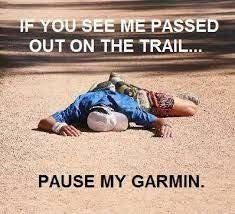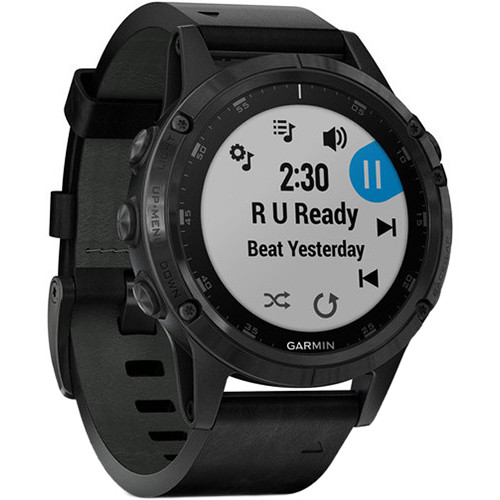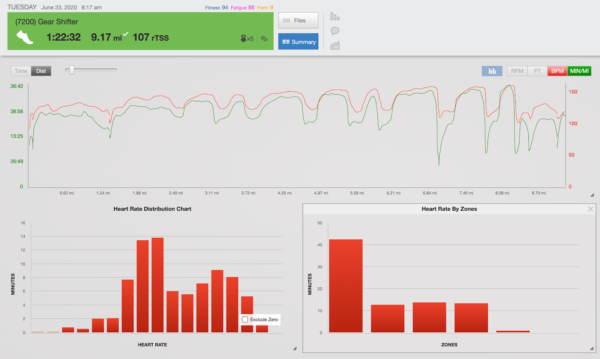Subtitle: What the f*ck is wrong with this thing?
By Coach Maria Simone

I’ve been a part of many discussions on the accuracy and reliability of our GPS-enabled watches. Some of the individual conversations I’ve had with athletes about their watches have went something like this:
- “There’s no way that pacing is correct. I didn’t run a 3:00 mile.”
- “Do you think that pacing is accurate? The map shows me swimming on a beach.”
- “I swam the same loop each time – how come the distance is so off?”
- “My watch distance is way different than the posted distance for the trail I took.”
- “I rode with my friend and her watch said we went 60 miles, but my watch only tracked 57 miles.”
These discussions have been revived, given how many of us have been swimming in open water more since 2020. The limitations of our watches’ ability to accurately gauge distance and pace is made very obvious with open water swimming.
So, let’s spend some time on issues of accuracy and reliability in speed, pace, distance and heart rate, along with some tips for how you can improve this accuracy and reliability with your watch.

Speed/Pace Accuracy
[NOTE: This section focuses on cycling and running. A later section discusses the issues with open water.]
For cycling and running, most GPS-enabled watches (such as the Garmin brand) have fairly good accuracy and reliability for lapped distances. For example, if you have an auto-lap set for 1 or 5 miles – the overall speed or pace your watch gives you for that lap is usually pretty accurate. And if your Garmin tells you that you averaged 9:00/mile for 1 mile, that’s probably pretty close to true both in terms of your pace and the distance.
However, most of these watches are not particularly reliable or accurate for current pace. So, let’s take that same lapped 1 mile. At any given point in that mile, the Garmin may be misreading pace. You likely noticed this with the way pace “jumps” in any given moment, or in the first tenth or so of a mile of a lapped effort. That’s a product of how the watch gathers information from the satellites.
An article on Fellrnr (running’s version of DC Rainmaker) offers an interesting and useful chart of various devices and their accuracy, which you can find here. Footpods from Stryd, Adidas and Garmin are ranked highest for accuracy. If you are running just with the watch, the newer model Garmins rank relatively low on the list. The Garmin Fenix series ranks in the bottom half of models and brands for accuracy, reliability, precision and repeatability.
As I review the list of devices, it seems to be that the simpler the model is, meaning the more dedicated it is to be a watch that will track only distance, speed and/or HR, the more likely it is to be accurate. Additionally, footpods are the most accurate. Even when uncalibrated, a footpod tracks pace and distance better than any other GPS-watch on the list.
While the newer watches are interesting with their features to (inaccurately) track VO2max, make race predictions (my garmin says I can run a sub-3 hour marathon – HOLLA!!), or provide recovery advice (97 hours of recovery time), the less accurate and reliable all of the features become. (Not to mention the horrendous battery life!)
For example, let’s take the Garmin Fenix 5x—the flagship product in Garmin’s running/triathlon line. There is a long list of features this watch provides beyond the basics of pace/speed, distance and HR. (See the list here. Yet its accuracy for its primary function as a GPS watch is rated as a 5.6 out of 10! It’s reliability is 6.9. Precision is 4.5. Repeatability is 6.8.
If you have an old 910XT or 310XT, you are actually getting better information than the newer Fenix models.
Factors that are likely to impact the accuracy of what your watch records
- Updated firmware. If you don’t keep up with the updates for your devices, this will limit the accuracy of the watch over time. Accept the updates when prompted.
- Turn on the watch and make sure the satellites are connected 10-15 minutes before you start the session.
- Nature of the route:
- the more twists and turns, the less accurate the watch becomes. So, for twisty routes, the watch is going to be less accurate overall.
- Buildings and/or heavier tree leaf cover along the route – this can obscure the signal and cause less consistent and accurate readings.
- Weather conditions – GPS will be more accurate on sunny vs. rainy days. Clouds may decrease the accuracy somewhat, but rain is a major factor.
- Enable GLONASS and one second recording. If you do this, however, it will impact battery life. So, for longer distances, you may have to compromise between better accuracy or longer battery life. I should also note that there is contradictory advice here, with Fellrnr saying that GLONASS and one second recording doesn’t make a substantive difference. But, if you call Garmin, they will tell you to adjust these settings.
If you try all of this, and you still want a more reliable, consistent and accurate read on pace or distance in running, get a foot pod that is compatible with your watch. The cycling equivalent of the foot pod would be the speed/cadence sensor for the bike.
For either the foot pod or the speed sensor, you need to make sure they are calibrated correctly. This article from Bicycling Magazine covers issues that are specific to cycling – and yes, our cycling GPS computers can fall prey to the same error as our watches.
If you don’t want yet another piece of gear, use Lap Pace or Lap Speed. Personally, I turn off the auto-lap function so I can set manual laps that are in line with my workout for the day. I do not import structured workouts to my watch. If you use structured workouts, the watch will do the laps for you with the intervals.
Speaking of Heart Rate
We use heart rate as a metric to determine how the body is responding to any given outcome metric – such as pace or power.

While there are variabilities to HR on any given day due to stress, sleep, hydration and the like, we can use HR to understand the “normal” patterns for your body’s responses.
In many ways, getting accurate HR information is more important than having accurate pacing or speed data.
Yet all of us have struggled at some point with wonky HR readings. So, what’s up with that?
First, stop relying on the wrist-based monitors. If you are using one right now, I’m sorry to break this to you: they don’t work.
An article from Runner’s World asked: “How accurate is your wrist heart rate monitor?” The answer to that question? Not very accurate especially if you want to move. In fact, the faster you move, the less accurate the reading becomes.
If you use a wrist-based monitor, you may notice that it works fine sometimes, but not others. Over time, that pattern is going to get worse.
If you call Garmin, the nice customer service person will tell you to:
- wash it but don’t submerge it (hmmm? Curious advice given that they market some of these watches for triathlon)
- Wear the wrist band tighter or looser. Okay, which one?
- limit your movement – um, wait, what?
- sprinkle fairy dust on it while whispering sweet nothings and turning in a circle 3 times.
But, none of those things will work. So, don’t worry about calling.
Instead, just purchase a chest strap.

Some straps are better than others. You want to make sure you get one that is Ant+ compatible. If you use Zwift or a smart trainer and connect via BlueTooth, you may also want to get one that is Bluetooth compatible. Keep in mind, however that the Ant+ connection will tend to be more reliable than the Bluetooth one.
The Special Case of Open Water: Is This Thing On?
I’ve had several conversations about the lack of accuracy and reliability of the distance and pacing information for open water swimming. On most days, the information your watch gives you about pace and distance in open water should not be trusted. If you regularly swim a marked course, you’ve undoubtedly figured out that your watch won’t measure it the same way twice. While there is bound to be some variation, this difference is sometimes well outside differences that may come from better or worse sighting. Sometimes it may work, but many times it won’t.
Unfortunately, there isn’t an easy fix for this. You can try swimming with the watch in your cap, but that poses a risk of losing it if it slips out.
I recommend that you rely on duration measured in time or using set landmarks or courses to get a sense of duration. For effort, use your RPE. I realize for those of you who want to understand your pacing, if you are getting faster or stronger, this may drive you nuts.
If you have an open water swim option with a measured route, you can use this as a way to gauge progress over time based on how long it takes you to swim a lap or loop of that course. If you don’t have a measured route, perhaps you can make one if you regularly swim at the same place. For example, a route may include swimming between two channel markers, house, trees, whatever. Use the landmarks to help you determine a repeatable route.
You can also use this as a mental fitness training opportunity, keeping the focus on what you can control. We can control our effort (RPE) and attitude. Enjoy the freedom of swimming without the shackles of pace and pool-based interval times. Instead, get in tune with your inner barometer of speed and effort.
Without the numbers, you may actually do better than you would have otherwise!
Don’t throw out your watch, please!
If this article makes you want to throw out your GPS-watch, hold up! That’s not the message here.
Rather, accept that our watches are only tools. They provide data that represents our pace, speed or distance – but that data is not the effort itself. To make sense of our effort, we need to be mindful of a variety of other variables, including HR, Power and RPE (rating of perceived exertion).
No device will be perfect. There will always be some degree of variability. Luckily, our bodies don’t care about that! Whether that data gets tracked by the watch or not, our bodies will respond, grow and get stronger from our effort.
